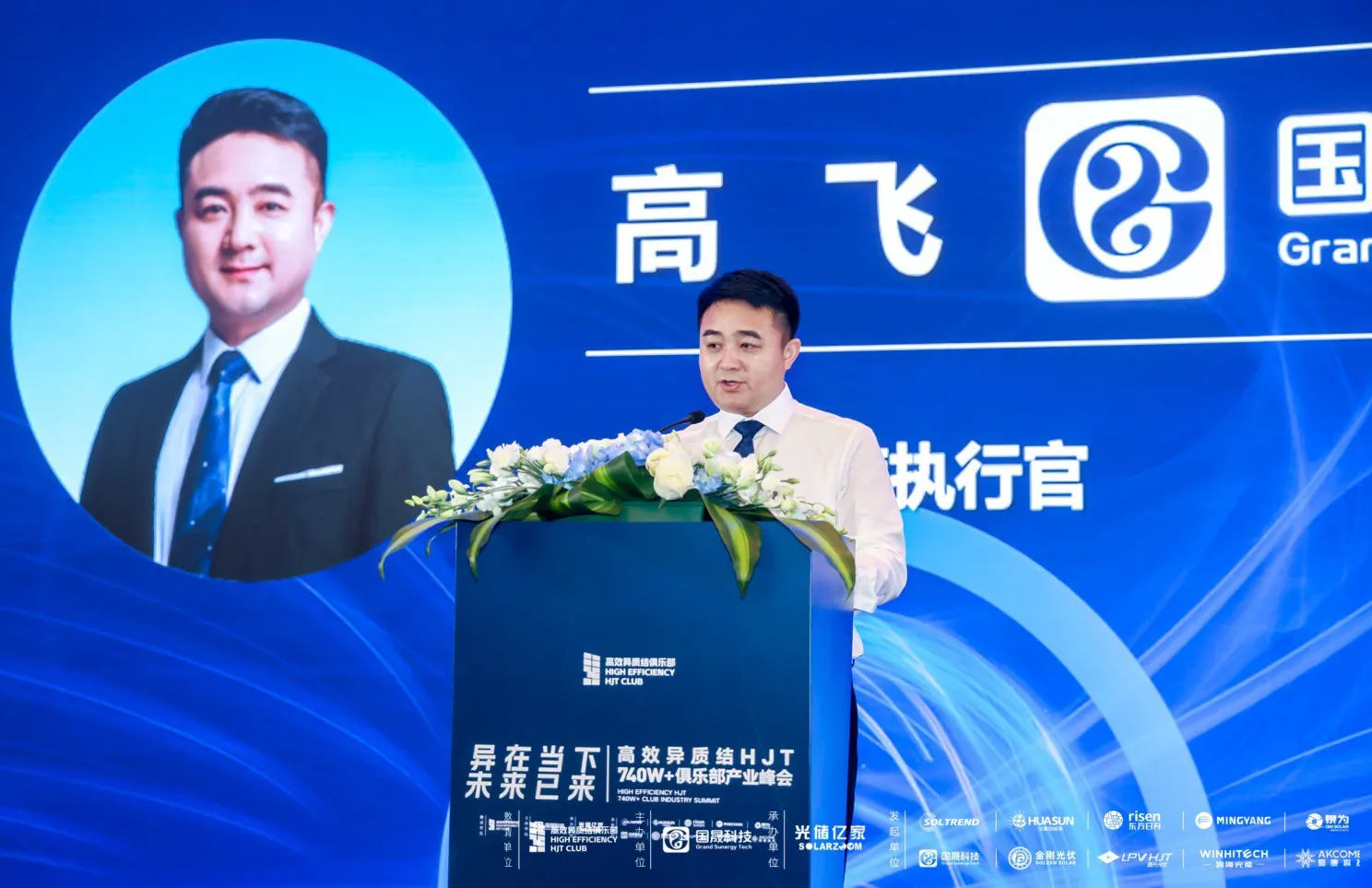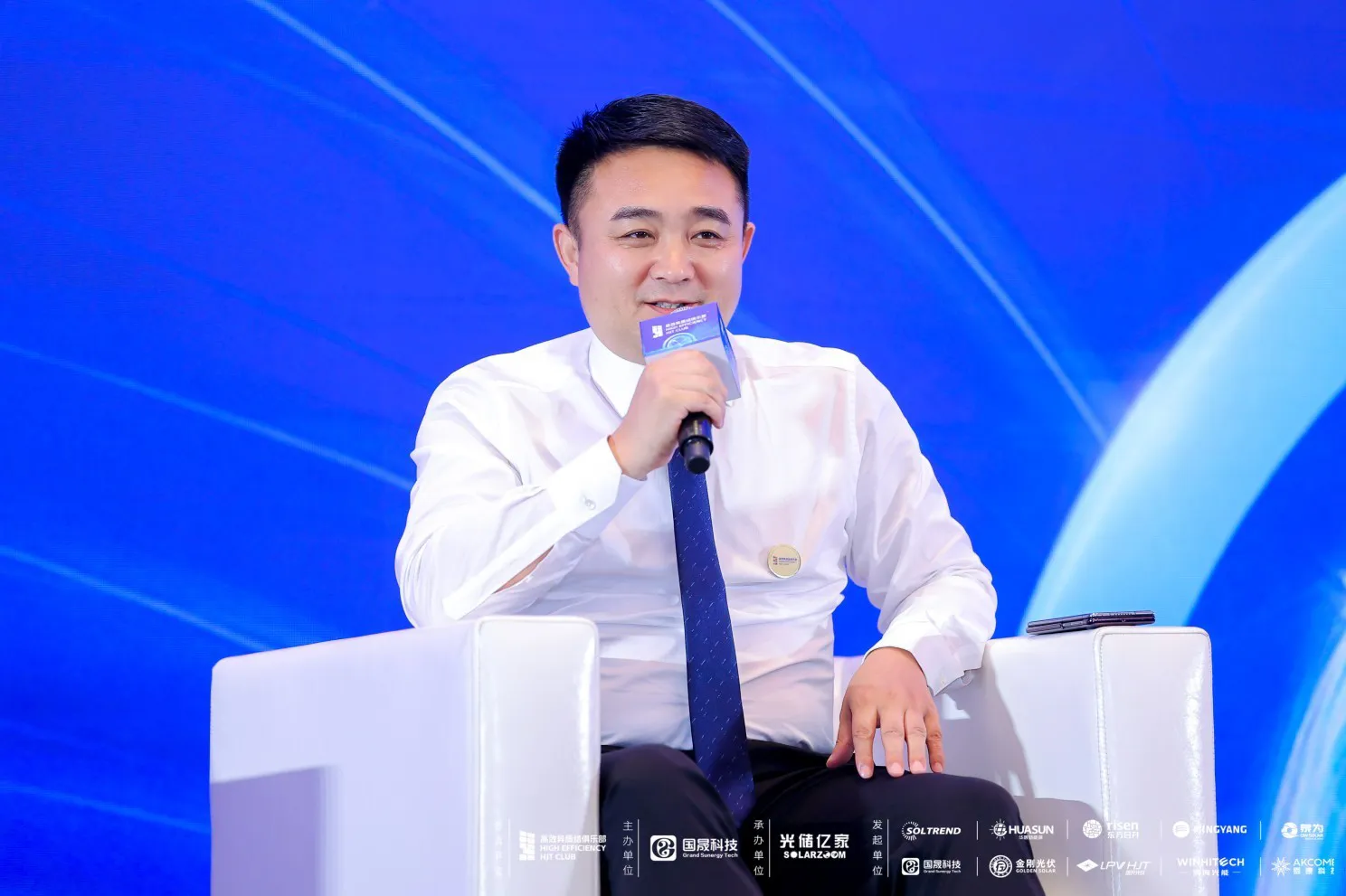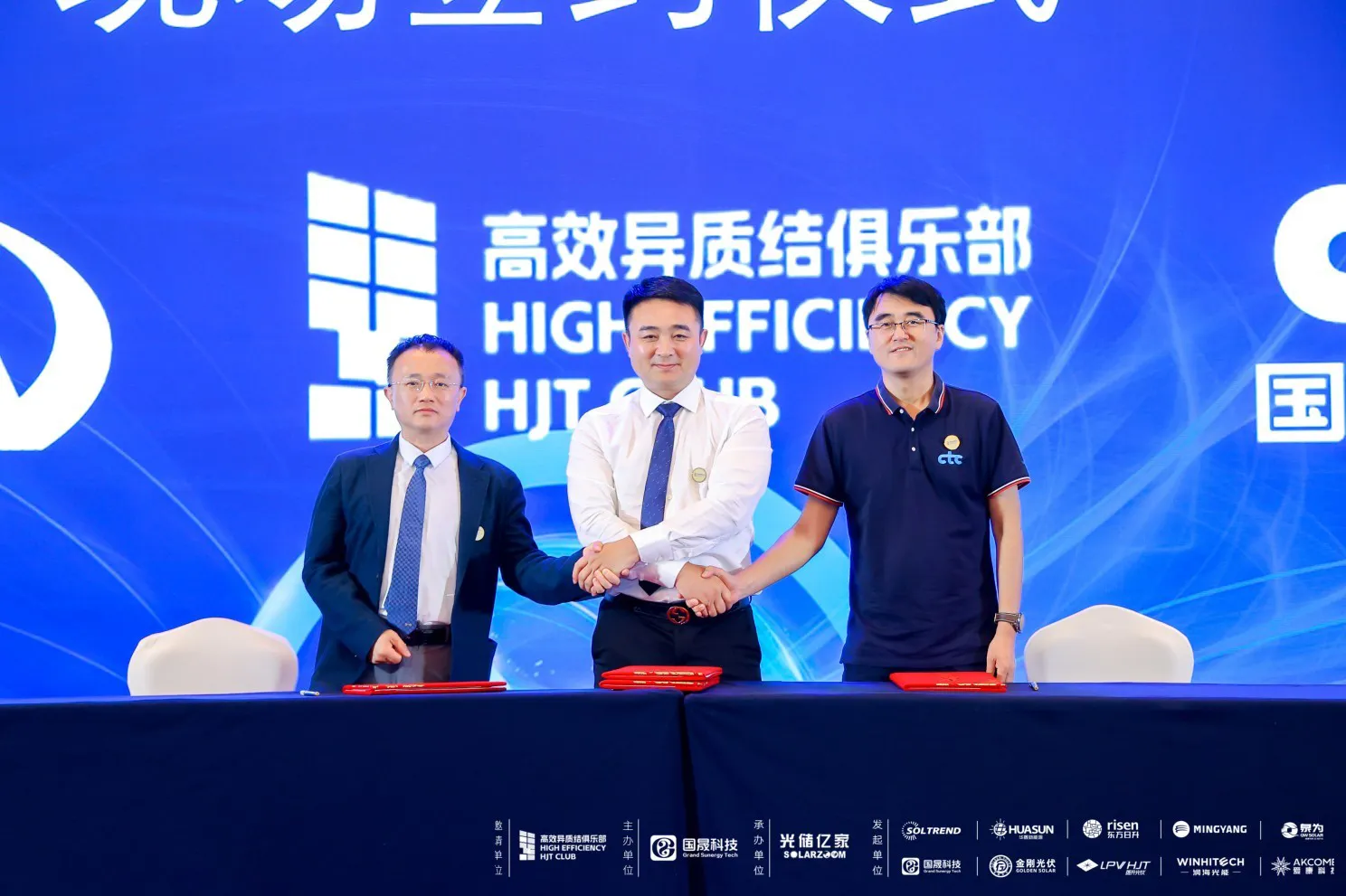On June 12th, the China High-Efficiency HJT Club (hereinafter referred to as “740W+ Club”) held its industry summit in Shanghai, focusing on the transformation pathways of high-efficiency heterojunction (HJT) technology and exploring new routes for high-quality development in China’s photovoltaic (PV) industry.

The meeting commenced with a keynote address by Gao Fei, President of Grand Sunergy, the rotating chair unit of the club. He extended a warm welcome and heartfelt thanks to the founding members and numerous guests gathered by the Huangpu River. Gao highlighted the shift among central and state-owned enterprises (SOEs) from experimental use to widespread adoption of HJT, with procurement as standalone segments becoming standard practice. He projected that HJT will secure a larger market share in the upcoming procurement cycles later this year and the next.
As the host of this meeting and the rotating chair unit for this month, Grand Sunergy is committed to leveraging its strengths in market expansion and resource integration to jointly promote technological innovation and green development in the PV industry with club members.

The summit, chaired by Zhang Zhongwei, President of Grand Sunergy’s PV division, saw the ten founding members solidifying the club’s mission based on discussions from three previous roundtable meetings: to build an HJT innovation ecosystem driven by technological innovation, fostering sustainable development in the PV industry.
Dr. Zhang Wenbin, CTO of Grand Sunergy and PhD from the Shanghai Institute of Ceramics, Chinese Academy of Sciences, delivered a presentation on cost reduction and efficiency enhancement pathways for HJT. He noted, “In HJT cell costs, silicon wafers and paste account for over 64%. The silicon and silver costs are significant hurdles for all crystalline silicon cells, including PERC and TOPCon. HJT’s low-temperature processing and simple procedures offer natural advantages in silicon wafer thinning, low-cost silicon material, and silver substitution with base metals, aligning well with these cost reduction initiatives.” He confidently stated that the cost of HJT cells could ideally be controlled at 0.188 RMB/W, underpinning the large-scale application of HJT.
Addressing the product selection requirements of central and state-owned enterprises, Gao Fei emphasized that major SOEs have specific needs and quality systems. Cost-performance ratio is a key factor in equipment selection, with customers generally favoring products that are low-cost, high-efficiency, and offer high overall returns. Additionally, product safety and stability are critical concerns. HJT, with its 30-year lifecycle and validation through empirical power plants, has demonstrated high reliability. The release of empirical power plant data further confirmed the superior power generation performance of HJT modules.

Moreover, for projects with specific installation environments, SOEs have tailored material and quality requirements. Grand Sunergy won the bid for the 540MW Yantai Zhaoyuan HJT offshore PV project in May this year. Offshore PV systems face more challenges compared to land-based PV, requiring enhanced wind resistance, salt spray resistance, corrosion resistance, and UV resistance. Our offshore PV systems have undergone stringent upgrades to meet these demands.

Additionally, the club signed strategic cooperation agreements with the China Institute of Metrology and the CTC National Inspection Group. The three parties will leverage their respective strengths to collaborate on HJT specialized metrology calibration capabilities and product testing technology experience. This partnership aims to continuously assist and enhance the performance of HJT-related PV products and the power generation capacity at the power station system level, fostering upstream and downstream collaboration within the HJT industry chain and promoting high-quality development in the sector.

